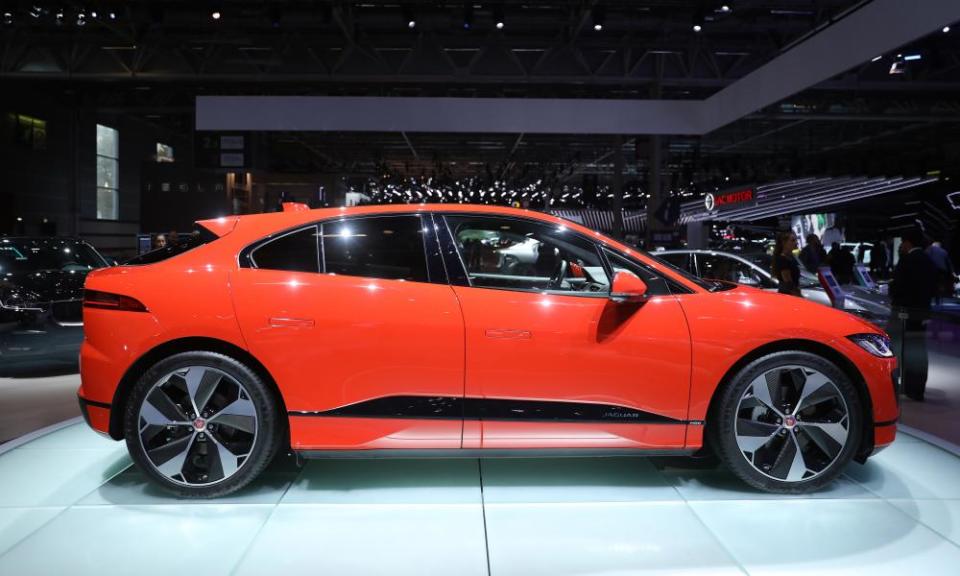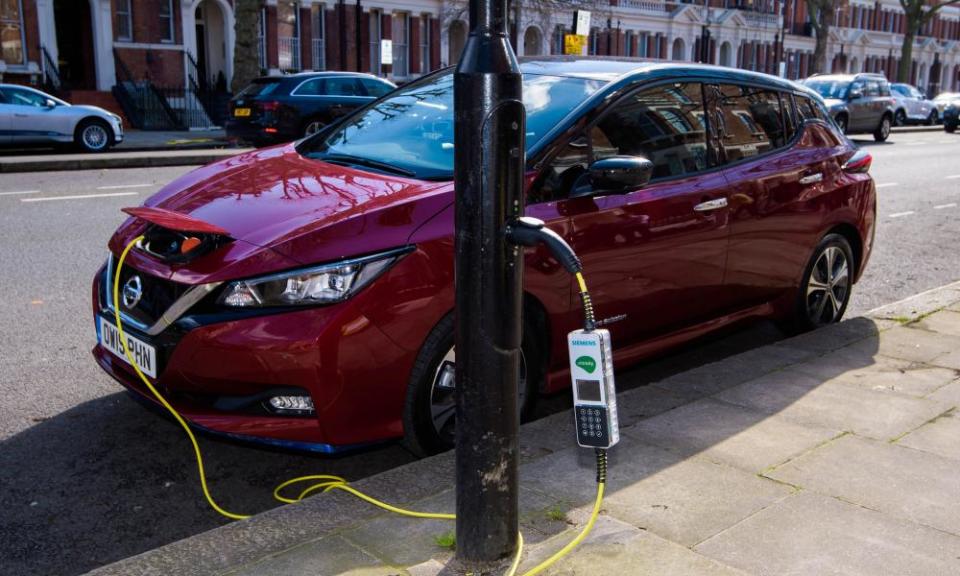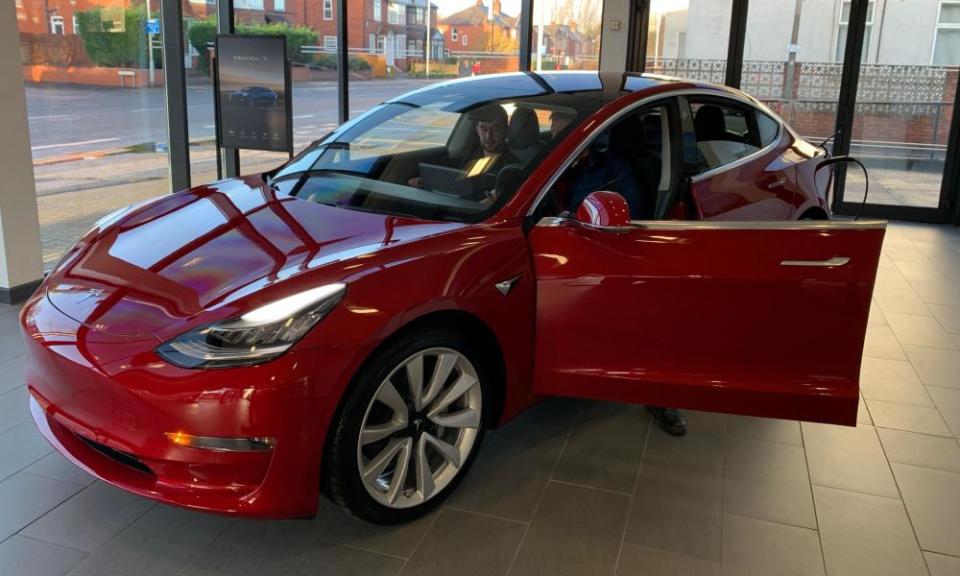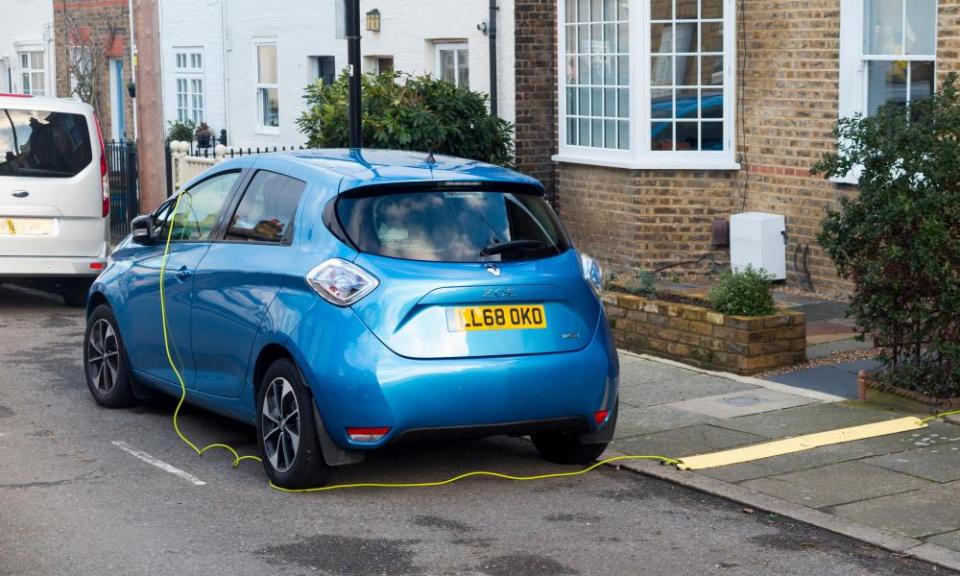Electric cars: five best buys, from new models to used bargains
If you’d love to replace your ageing car with an electric model but have been put off because you don’t have a drive on which to charge it, it’s time to think again.
The latest electric cars can travel 230-260 miles between refills. This, plus improvements to the infrastructure that allow 80% recharges in just 30-40 minutes, means they can almost be run in the same way as conventional models – with a once-a-week refill.
Figures out this week showed that 6% of new cars sold in June were fully electric models – making it the fastest growing sector. There are now 300,000 plug-in cars on the UK’s roads, compared with just 3,500 in 2013, and almost 120,000 of them run purely on battery power.
This week British Gas revealed it had ordered 1,000 all-electric Vivaro vans from Vauxhall for its engineers. If it is preparing to move its entire fleet over to electric, is it time the rest of us considered electric vehicles too?
“If you’re looking to buy a new or used car, now is the perfect time to switch to an electric car,” says Ben Lane, co-founder of the Zap-Map app, which guides owners to their nearest public charging point.
“With most electric cars now doing more than 200 miles on a single charge, the range restrictions of previous models is gone. They offer huge local air-quality improvements, there is zero benefit-in-kind [company car tax] payments, and they cost far less to run per mile than petrol or diesel models – why would you still want to drive a car with an old fashioned engine?”
Lane, who owns a used all-electric BMW i3, says he is not set up to charge the car at his Bristol home and relies on a fast charger near work for a 30-minute, £10 top-up once a week. If he leaves the city, he uses public chargers on the motorway network, or at his destination.
“It just takes a little bit of planning, and I schedule in a weekly charge around a lunch break. Drivers who give electric cars a serious try, rarely, if ever, go back,” Lane says.
If you have never driven an electric car, what can you expect? The biggest change for most drivers will be that electric cars are universally automatic, meaning no gears or clutch. They accelerate extraordinarily quickly – frighteningly so in some cases.
And they are generally quieter than petrol cars. The dashboard shows the remaining range and a host of other information but, apart from that, most drivers will adapt easily enough.
Recharging rather than refilling the car takes a bit of getting used to, say users, particularly if you don’t have a driveway and the ability to install a charger at home.
While the purchase costs are higher – the better new models start at about £26,000 – the running costs are considerably less. Most buyers will elect to lease or long-term hire their cars with payments starting at approximately £250 a month after a big upfront payment. Good models can be found secondhand, although they will not all offer the range and faster charging options of the latest versions.
Instead of paying £50 to fill up at the petrol station, electric cars cost as little as £5 to charge at home on a night-time economy tariff, or £10-£15 at one of the UK’s 18,600 charging points.
Electric car buyers pay no vehicle excise duty, saving £140 a year compared with the average car. Annual servicing should also be cheaper – there is no oil to change, no spark plugs to check, no gearbox and fewer moving parts – and no expensive cambelt and exhaust replacements to make as the car gets older.
Electric cars typically cost a little more to insure than conventional models, because they are more expensive to repair in the event of a crash. However, LV=, which is aiming to be the go-to insurer for electric cars, says the Nissan Leaf costs only £10 a year more on average to insure than a petrol Nissan Micra.
One of the biggest problems for potential buyers is the almost bewildering array of models, battery sizes and claimed ranges. Instead of engine sizes, manufacturers quote the size of the battery – in kilowattm hours (kWh) – and the bigger the battery the further the range. The motor’s output is confusingly quoted in kilowatts (kW) – so while the Renault Zoe comes with a 50kWh battery it also offers two motor sizes of 80kW or the faster 100kW, what would have been 1.6-litre or 2.0-litre engines in the old technology.
Buyers need to be aware that the outside temperature affects an electric car’s performance, and the range drops dramatically in the winter. On the plus side, the latest models enable motorists to turn on the heating remotely via a mobile app, so you won’t get cold de-icing the car in January.
So which should you buy? Fortunately for you, we have read all the car reviews, talked to the people who know and crunched the numbers – so you don’t have to. Below we run through the best buys, and what you will pay to buy a vehicle or for long-term hire, which is the most likely option.
Best small car: Renault Zoe

Starting at £26,000, the latest Zoe is not the cheapest electric car you can buy, but it should go almost 200 miles on a full charge and you get practical four-door hatchback capable of long journeys. It comes with good standard equipment, a 50kWh battery, and the company will throw in a wall-mounted 7kW home charger too.
A serious upgrade has improved the Zoe’s performance, resulting in the option of a second, faster model. Crucially, you can also upgrade (for £1,000) to enable the use of rapid (50kW CCS) charging points. This makes it possible to get to an 80% recharge in about an hour, so it is worth having if you cannot charge the car at home.
Go for the more powerful 100kW version if you do more out of town driving, plus the rapid charger option. Ling Cars will hire one to you for three years for £235 a month with a £1,410 payment upfront.
If your budget does not stretch to that, or you rarely leave the city and you can live with a 110-mile range, the Škoda Citigoe iV is much cheaper at about £17,500 outright or for hire or lease from EDF Energy for £170 a month. It’s smaller and less practical than the Zoe and will struggle with long motorway trips, but is ideally suited to someone taking lots of short urban trips.
Best family car: Kia e-Niro

After a long-term test and 10,000 miles on the road, Auto Express said the 64kWh five-door Kia e-Niro was “pound for pound” the best electric car on sale, and it remains the top choice for those needing space for pushchairs and similar items.
“A great family car that happens to be electric. It’s better to drive than many petrol cars, is way cheaper to run and is a fuss-free joy to live with. I absolutely love it,” was the tester’s final verdict.
It typically delivers a real-life range of 250 miles on a full charge, depending on the temperature. When using Kia’s super-fast 100kW chargers, testers said they were able to add about 150 miles of range in 30 minutes of charging. On a more common 50kW rapid charger, expect to wait an hour.
This car can be bought for about £33,000, but again most buyers will probably hire/lease one. Ling Cars will hire you one for three years for £465 a month, plus an upfront payment of £1,395. For comparison, the cost of the petrol hybrid equivalent is approximately £320 a month.
Best executive car: Jaguar I-Pace

The electric Jaguar I-Pace has won all the big awards around the world, including the UK, European and world car of the year. The sports utility model is packed with the latest technology, has frighteningly quick acceleration, according to owners, and offers “a driving experience that will win over just about everyone who gets behind the wheel”, according to Nextgreencar.com.
It has a claimed range of 292 miles on a full charge, or 250 miles in real life. Owners get a 90kWh battery, which comes with an eight-year/100,000-mile warranty. It also features ultra-rapid 100kW charging.
On the downside, it’s not huge inside for an executive car, but it’s the price that will halt most buyers in their tracks – a cool £63,925 to £74,425. Expect to pay £750 a month to lease one with an upfront payment of £6,700.
Best secondhand model: Nissan Leaf

Used Nissan Leafs are the bargains of the electric car world. On Auto Trader this week a 2011 model with 36,000 miles on the clock was going for less than £6,000. Older models have a real-life range of 75-85 miles – significantly less than the new cars above, but perfectly good for a 60-mile round-trip commute each day – if you ever have to go back to the office.
These cars are well-made, practical and reliable, and have proved durable. Guardian Money is aware of one that has 187,000 miles on the clock and still manages 75 miles on a full charge. If you need a bigger range, £10,000-£14,000 gets you a 30kWh version that will do about 110-120 miles on a full charge. Older Leafs can use many of the the rapid chargers that are available.
Given that they cost just pennies to run, these offer super-cheap, clean, very low maintenance motoring that cannot be beaten.
Best overall: Tesla Model 3

No review of electric cars would be complete without a mention of Tesla. Its £42,500-£55,000 Model 3, its “affordable” car, has been an instant hit since launching last year. The standard design will do 254 miles on a single charge, while the long-range model claims 348 miles. These cars are packed with technology and, like the Jaguar, offer impressive performance figures. They will take four passengers, and feature a super-minimal interior that you will either love or hate.
“For a few thousand pounds more than a Kia e-Niro you get a product that feels more special,” says Auto Express. However, some reviewers have expressed concerns as to whether the build quality is as high as it should be, given the price. Rapid charging is available from Tesla’s Supercharger network and conventional CCS charge points.
IPhone users will want this car. Those who prefer the value they get from a top Android phone may want to opt for the Kia instead. And if you can afford it, buy the Jag.
Charging: what you need to know

There are more than 11,600 charging sites in the UK, but spend a hour looking at how and where drivers can recharge their cars out on the road, and it’s easy to see why so many use only their home charger. A bewildering range of sockets and a host of companies have popped up at motorway service areas, car dealers, supermarket and local authority car parks and, increasingly, pubs and restaurants.
Some are free to use but most now have a fee, particularly the rapid chargers that will deliver 80% recharges in less than 40 minutes. Some require users to sign up for an app and special payment card; others let you pay contactlessly with a standard bank card.
Paid-for charging sites typically cost 30p per kWh, which is about twice as much you would pay if doing it at home, meaning you will pay about £10 for 33kWh of electricity at a rapid charger – in most cases enough to drive 130 miles.
In something of a rerun of the Betamax/VHS video battle of the 1980s, there are three types of connector currently being used, meaning most drivers have to carry two leads around with them. The good news is that new cars sold in Europe are moving to one standard, CCS faster charging, which should make life much easier in future.
New drivers of electric cars should download the Zap-Map app, which lists the public chargers in any given location or on a planned route as well as the type of charge offered. It also gives service updates as to whether the charger is working, which can be an issue.
Drivers connecting to low-power 7kW public chargers use their own cable, while the higher-powered 50kW and 100kW sites have built-in cables, similar to a petrol pump.
Dundee is the UK’s unlikely e-car charging capital and is showing other cities how to do it. Last year it opened the latest set of 20 fast-charging bays on top of a multistorey car park – the bays are largely powered by solar panels. The city is by far the most advanced in the UK in switching to electric vehicles, with 20% of local taxis already entirely electric.

